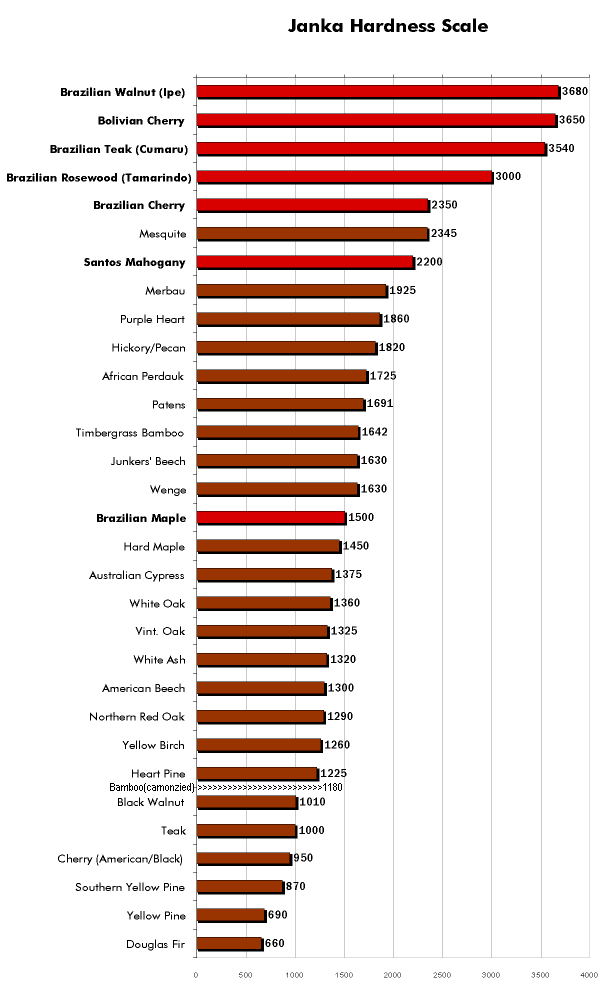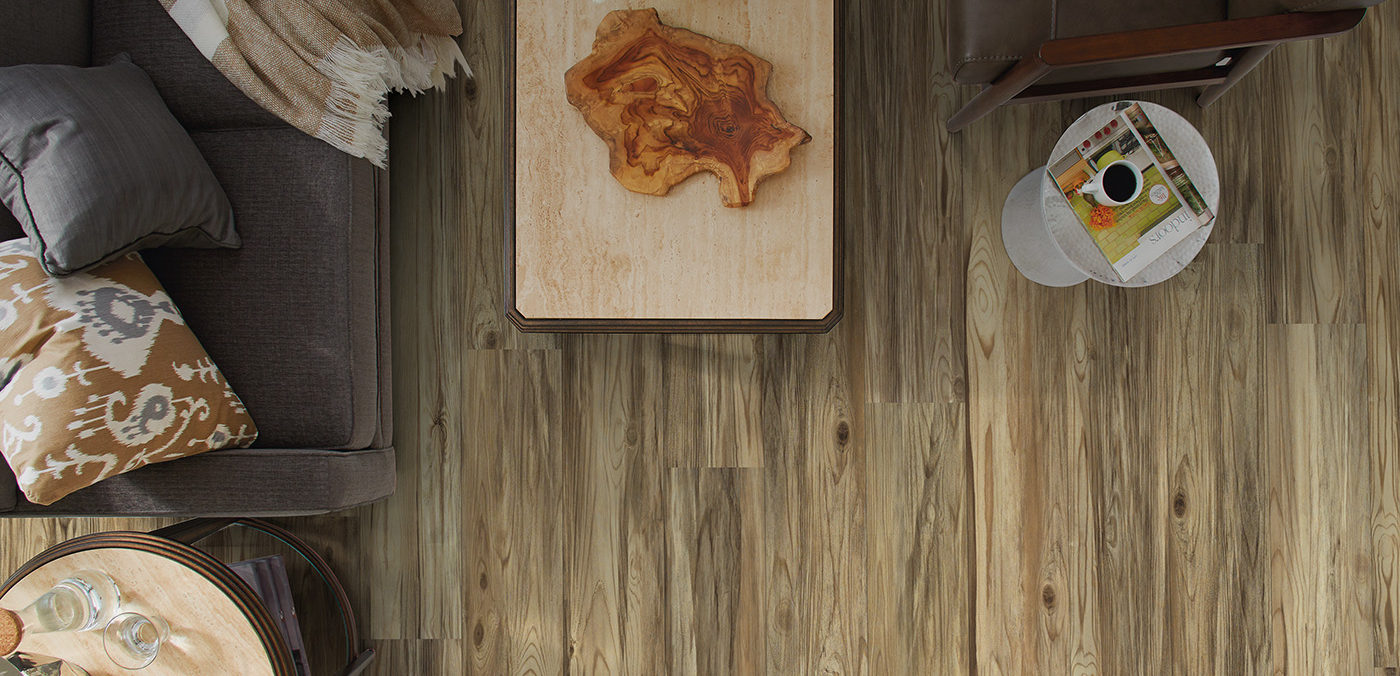
Everything You Need To Know About The Janka Hardness Scale
The Janka Hardness Scale is very useful when we are choosing a hardwood flooring as it stands for the hardness of a particular material. This scale was invented by an Austrian researcher by the name of Gabriel Janka in 1906 and was officially accepted in 1927 by the ASTM (American Society for Testing and Materials).
In some rooms, the type of wooden floor you choose must satisfy these criteria, with other words, it must have a specific level of hardness. The acquired rates vary from room to room, and it is wise to check them before choosing your floor. The scale is simple, the higher the numbers, the harder the wood.
Have in mind though, the Janka scale doesn’t determine price. On the contrary, a hardwood flooring with a higher level of hardness might be cheaper since the prices are mainly determined by the availability of the product.

HOW DOES ARE THE RATINGS DETERMINED?
The Janka Hardness Scale was determined through a couple of initial tests. The same method is used today. The tester takes a 2 x 2 x6 inch wooden piece and presses a 0.444 inch steel ball on it. With this, the tester calculates how many pounds per square inch of force is needed for the ball to go halfway through the plank.
THE VARIABLES YOU SHOULD KNOW
Each piece of wood is different. For the Janka testing to be conducted, a wooden plank must have a flat grain. The tests can also be done on vertical wood grains, but the results won’t be of equal importance, and usually aren’t shown on the scale.
HOW DOES THE SCALE LOOK LIKE?
As we mentioned before, the scale is quite simple. It starts at 0 (the softest wood) and ends at 4000 (the hardest). In the real world, there isn’t a piece of wood that would have a 0 rating. This type of wood would be a terrible flooring material, as well as the one with the 4000 rating since it would be impossible to saw and cut.
HOW IS THE SCALE EXPRESSED?
Because of the difference in measurements between the USA and Canada or Europe, the Janka Hardness Scale is expressed in pounds over force, in Sweden in kilograms over force, and in Australia it is expressed in Netwtons.
WHAT IS A GOOD JANKA RATING?
The Janka Rating is an indicator that will prepare buyers and inform them about the floor’s ability to fight wear and tear over the years. It is an indicator of durability, but it shouldn’t be taken for granted. The condition of the hardwood flooring mainly depends on the amount of care and maintenance that it gets. Its conditions is also influenced by amount of traffic and weather conditions.
WHAT IS A BAD JANKA RATING?
Even though there isn’t a definite answer for a “good” Janka rating, the expected rating is around a 1000. Currently, the lowest wood on the scale is Balsa (100) which is mainly used in arts & crafts. This type of wood should definitely not be used for flooring.
DOES OAK HAVE A HIGH RATING?
As one of the most popular materials for hardwood flooring, oak has been tested and has its own Janka Scale rating. White oak has a rating of 1360 while red oak is rated at 1260. Even though there are many other types of wood with higher ratings, oak still provides quality. However, its popularity is accredited to its availability to manufacturers and saw mills rather than performance.
IS BAMBOO HARD ENOUGH?
Every type of wood out there has its own pros and cons. Bamboo is one of those materials that has more advantages than disadvantages. This type of wood has extremely high ratings on the Janka Scale, ranging from 3800 to 5000. Bamboo is almost as durable and hard as Eucalyptus (4000 – 5000). Of course, these numbers mainly depend on the quality of manufacturing.
ENGINEREED HARDWOOD FLOORING – AN EXCEPTION
The Janka Hardness Scale cannot help you at all while shopping for an engineered hardwood flooring. This is because this type of floors are predesigned and engineered by humans. They wouldn’t fit into the Janka Scale because each floor is differently made. Some have thinner softwood layers beneath, some have thicker. Such variables make it very difficult to determine engineered hardwood’s Janka rating.
HARDWOOD VS SOFTWOOD
The Janka Scale can truly help homeowners make the right decisions for their homes. However, high ratings on the Janka Scale doesn’t determine end results and performance. This is because the condition of your wooden flooring will mainly be influenced by maintenance and climate. To make it clearer, let’s use an educative example.
Imagine how two neighbors are buying new floors. The first house buys a softer wood (American Cherry with a rating of 950), while the second one buys a renowned hard wood (Brazilian Cherry with a rating of 2820).The first homeowners take every precaution possible to preserve the floor’s functions while the second homeowners do nothing of the sorts.
Now let’s imagine how we return to these homes 10 years later. Who will have a better floor? The first homeowners of course! The Janka Scale can help us in our shopping spree, but it can’t determine functionality and end results. Everything depends on how you treat your new floors.
IS SOFTER WOOD STRONGER?
The Janka Scale informs us only about the hardness of a particular wooden material. It doesn’t stand for softness (when it comes to comfort), or strength. The Janka ratings signifies how well a wooden material will fight wear and tear over the years.
CONCLUSION. WHAT WOOD TO CHOOSE?
The Janka Scale has helped a lot of people, but as mentioned above, it shouldn’t be followed radically. How you treat your new wooden flooring has a far greater meaning than the Janka Scale. However, if you have lots of furniture in the room, pets, or children, you could buy a wood with high Janka ratings just in case of unpredictable wears & tears in the future.





-
Tagged flooring, lvp flooring, vinyl, vinyl flooring, vinyl plank